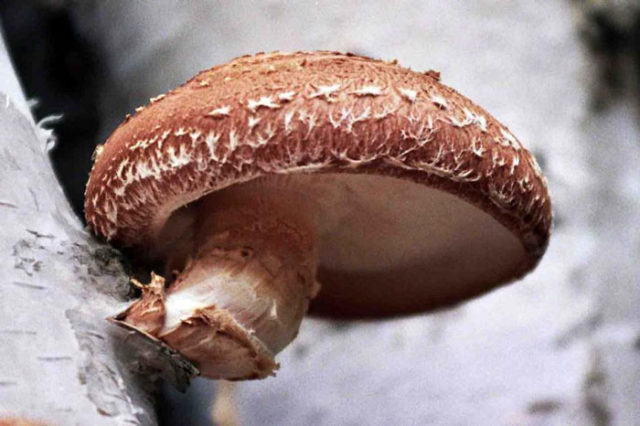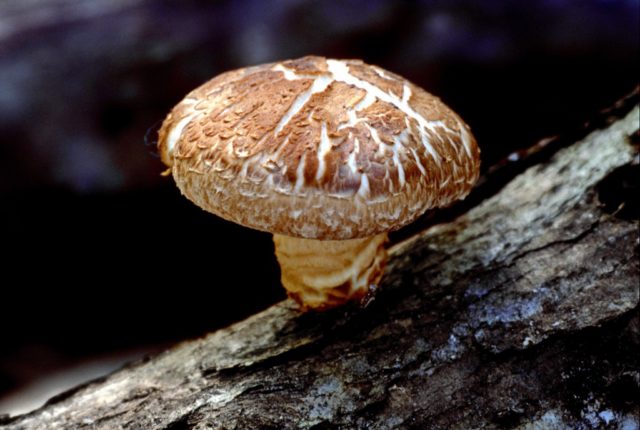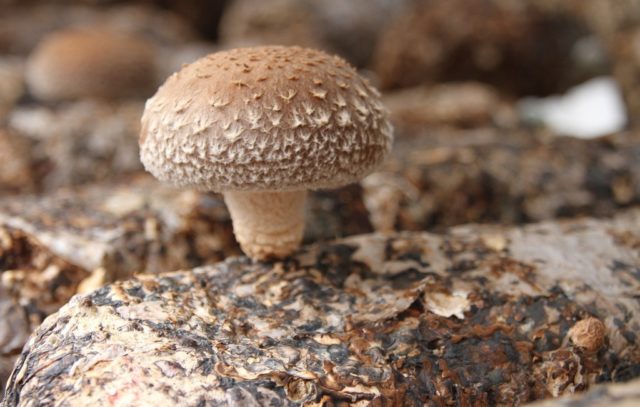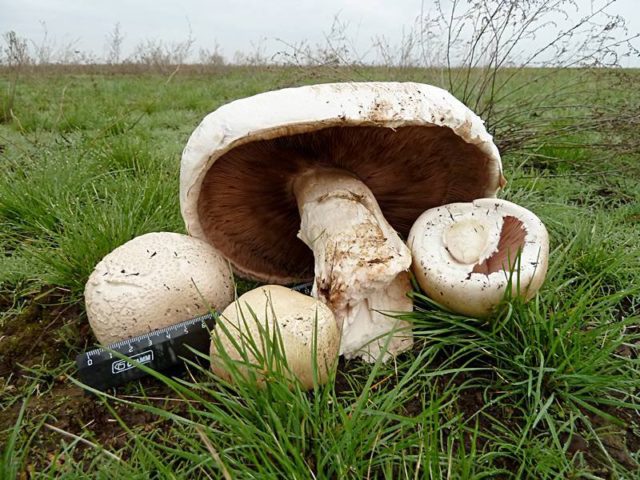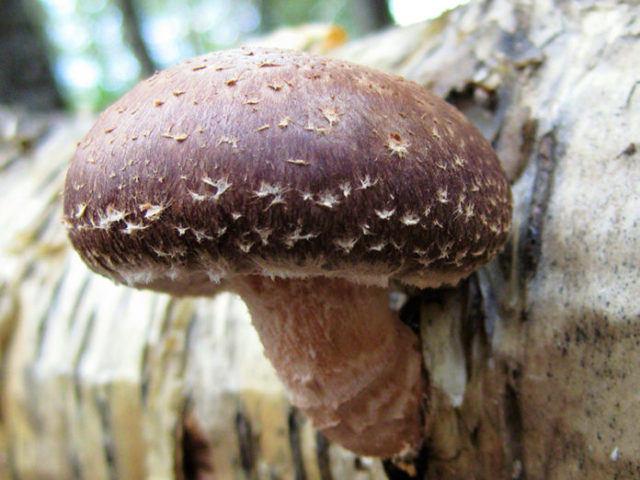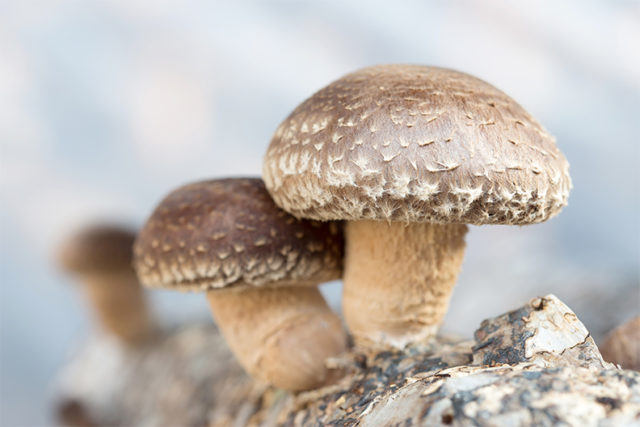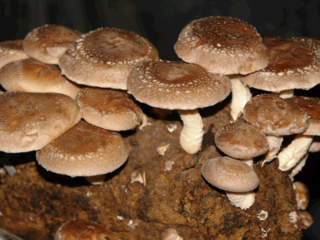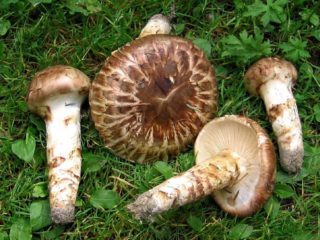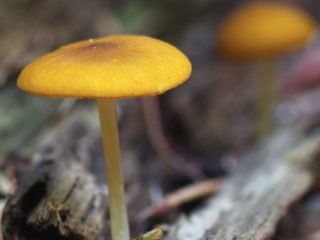Content
Photos of shiitake mushrooms show fruit bodies that are very unusual in appearance, which are similar to champignons, but belong to a completely different species. For Russia, shiitake is a rather rare species, and you can find it on an artificial plantation much more often than in natural conditions.
What is Shiitake
Shiitake, or Lentitulaedodes, is an Asian mushroom that grows mainly in Japan and China, but is widely known around the world. In addition to its excellent taste, it has medicinal properties. Traditional oriental medicine believes that it activates the vitality of a person and helps the body defend itself against most diseases.
Description of shiitake mushrooms
The appearance of Asian mushrooms is quite recognizable. You can distinguish them from other varieties by the shape and color of the cap, by the leg, as well as by the places of growth.
What shiitake mushrooms look like
Shiitake is a medium-sized Japanese forest mushroom. Its cap can reach 15-20 cm in diameter, it is convex and semicircular in shape, fleshy and dense. In young fruiting bodies, the edges of the cap are even, in mature ones, they are thin and fibrous, slightly turned. From above, the cap is covered with a dry velvety skin with small white scales. At the same time, in adult mushrooms, the skin is denser and thicker than in young ones, and in old fruit bodies it can crack strongly. In the photo of the shiitake mushroom, it can be seen that the color of the cap is brownish brown or coffee, light or darker.
The underside of the cap at the fruiting body is covered with white thin plates, quite frequent, darkening to a dark brown shade when pressed. In young fruiting bodies, the plates are completely covered with a thin membrane, which subsequently collapses.
In the photo of Chinese shiitake mushrooms, it can be seen that the stem of the fruit bodies is rather thin, no more than 1.5-2 cm in girth, straight and narrowed towards the base. In height, it can stretch from 4 to 18 cm, its surface is fibrous, and its color is beige or light brown. Usually on the stem you can see the fringe left over from the protective cover of the young mushroom.
If you break the cap in half, then the flesh inside will be dense, fleshy, creamy or white in color. Shiitake are rather weighty mushrooms, one large fruiting body can reach up to 100 g by weight.
How shiitake grow
Shiitake is mainly distributed in Southeast Asia - in Japan, China and Korea, they are found in the Far East. You can meet the mushroom singly or in small groups on tree trunks or dry stumps, fruit bodies form a symbiosis with wood and receive nutrients from it. Most often, the mushroom chooses maple or oak for growth, it can also grow on willow and beech wood, but you cannot see it on conifers.
Most of the fruit bodies appear in the spring or autumn after heavy rains. In conditions of high humidity, the fungus grows most actively.
Where shiitake mushrooms grow in Russia
On the territory of Russia, shiitakes are not very common - they can be found in natural conditions only in the Far East and in the Primorsky Territory.Mushrooms appear on Mongolian oak and Amur linden, they can also be seen on chestnuts and birches, hornbeams and maples, poplars and mulberries. Fruiting bodies appear mainly in the spring, and fruiting continues until late autumn.
Since shiitake are very popular in cooking and are considered valuable from a medical point of view, they are also grown in Russia in specially equipped farms. Plantations are located in the Voronezh, Saratov and Moscow regions, it is from there that fresh shiitake is supplied to markets and shops, which can be purchased for their own purposes.
An interesting feature of the mushroom is that it grows very quickly. The fruiting body acquires full ripeness in just 6-8 days, therefore, the cultivation of the Japanese mushroom is carried out on a volumetric scale, which is not too difficult. Under artificial conditions, mushrooms bear fruit throughout the year, this is considered very successful, given the high popularity of shiitake. They are even more in demand than champignons or oyster mushrooms.
Types of shiitake
In fact, shiitake species are monotypic, which means that they have no similar or related species. However, in appearance, the Japanese mushroom is often confused with meadow or common champignon, the varieties are very similar in the structure of the cap and leg.
The champignon also has a medium-sized cap up to 15 cm, convex and outstretched in adulthood, dry to the touch and with small brown scales on the surface of the cap. At first, the color at the top of the champignon is white, but with age it acquires a brownish tint. The stem of the fruiting body reaches 10 cm in length, does not exceed 2 cm in girth, is even and cylindrical in shape, slightly tapering towards the base. The remains of a thin, wide ring can often be seen on the stem.
But at the same time, it is very easy to distinguish champignon from shiitake in natural growing conditions. Firstly, champignons always grow on the ground, they prefer nutritious soils rich in humus, they are found in meadows and forest edges. Champignons do not grow on trees, but shiitake can only be seen on stumps and trunks. In addition, Japanese mushrooms are found in nature in the spring, while the fruiting of mushrooms begins in June.
Uses of shiitake mushrooms
It is not just that the Japanese mushroom is grown in Russia on an industrial scale on artificial plantations. It is very popular in cooking.
It can be found:
- in soups, sauces and marinades;
- in side dishes for meat and fish dishes;
- in combination with seafood;
- as a standalone product;
- as part of rolls and sushi.
In shops, shiitake can be found in two types - fresh and dried. In Japan and China, it is customary to eat fruit bodies mostly fresh, mostly raw immediately after harvest, Asians believe that only fresh fruit bodies have an unusual pungent flavor. In European countries, shiitake is used in cooking mainly in dried form, they are pre-soaked before cooking, and then added to soups or fried.
In food use, Japanese mushroom caps are more popular than stems. The structure of the latter is too hard and fibrous, but the flesh of the caps is tender and soft, very pleasant to the taste. Fresh and dried fruit bodies emit a pleasant mushroom aroma with a faint touch of radish and decorate culinary dishes in terms of not only taste, but also smell.
It is impossible not to mention the medical use.Due to their diverse chemical composition, they are highly valued in traditional and folk medicine. Shiitake extracts are used to fight multiple sclerosis, cancer and other dangerous diseases - the medicinal value of mushrooms is officially recognized.
Calorie content
Although the chemical composition of shiitake is very rich and rich, the nutritional value of mushrooms is very small. 100 g of fresh pulp contains only 34 kcal, while shiitake has a large amount of valuable protein and perfectly saturates.
The calorie content of dried fruit bodies is much higher. Since there is practically no moisture in them, nutrients are in a higher concentration, and in 100 g of dried pulp there are already 296 kcal.
Conclusion
Photos of shiitake mushrooms should be studied in order to distinguish Japanese mushrooms from ordinary mushrooms in the store, and even more so in natural conditions. Their appearance is quite recognizable, the mushroom pulp has an unusual, but pleasant taste. They bring colossal benefits to the body, which is why they are so highly valued all over the world.
